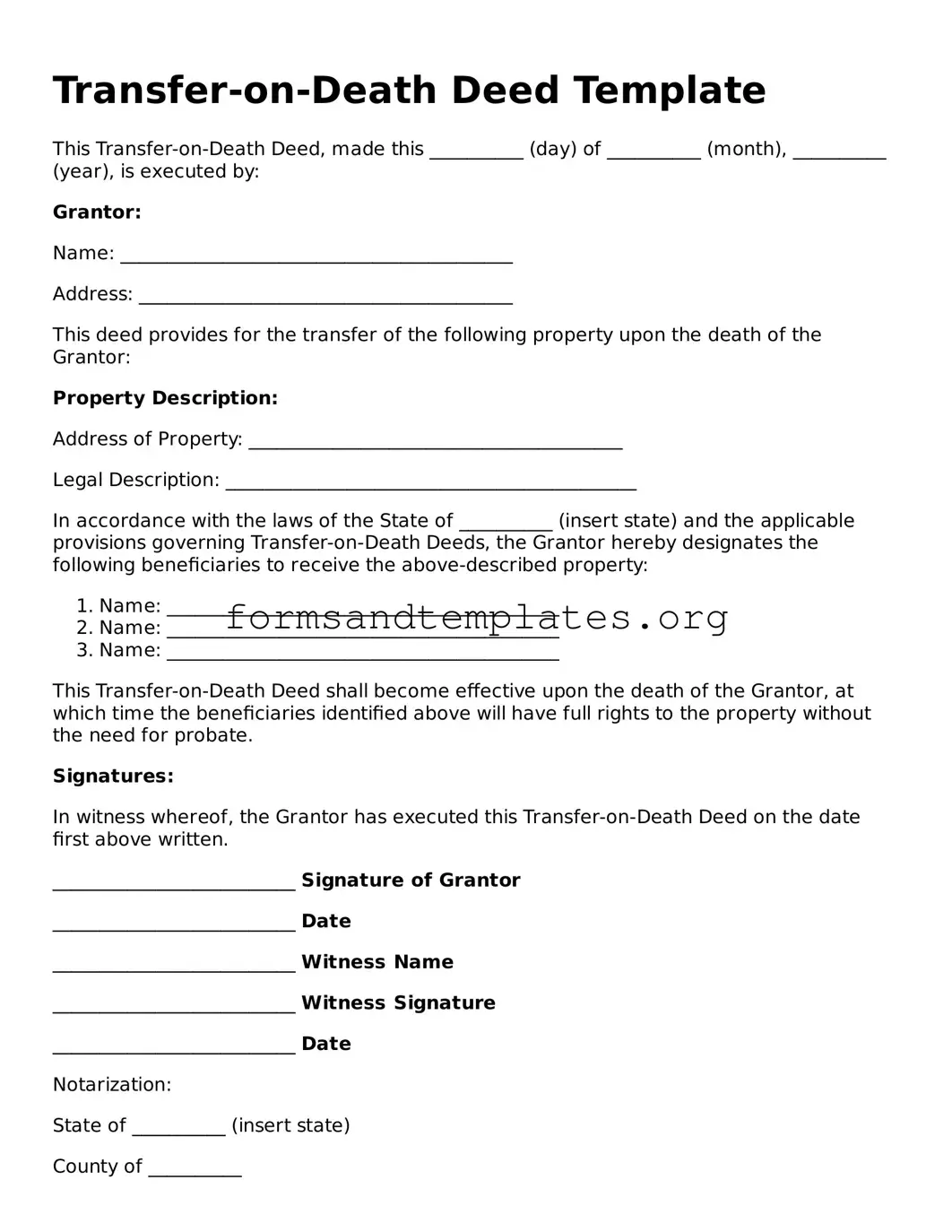Transfer-on-Death Deed Template
This Transfer-on-Death Deed, made this __________ (day) of __________ (month), __________ (year), is executed by:
Grantor:
Name: __________________________________________
Address: ________________________________________
This deed provides for the transfer of the following property upon the death of the Grantor:
Property Description:
Address of Property: ________________________________________
Legal Description: ____________________________________________
In accordance with the laws of the State of __________ (insert state) and the applicable provisions governing Transfer-on-Death Deeds, the Grantor hereby designates the following beneficiaries to receive the above-described property:
- Name: __________________________________________
- Name: __________________________________________
- Name: __________________________________________
This Transfer-on-Death Deed shall become effective upon the death of the Grantor, at which time the beneficiaries identified above will have full rights to the property without the need for probate.
Signatures:
In witness whereof, the Grantor has executed this Transfer-on-Death Deed on the date first above written.
__________________________ Signature of Grantor
__________________________ Date
__________________________ Witness Name
__________________________ Witness Signature
__________________________ Date
Notarization:
State of __________ (insert state)
County of __________
On this __________ (day) of __________ (month), __________ (year), before me, a notary public in and for said state, personally appeared the above-named Grantor, who acknowledged that they executed the same for the purposes therein stated.
__________________________ Notary Public Signature
__________________________ Date
My commission expires: __________ (date)
